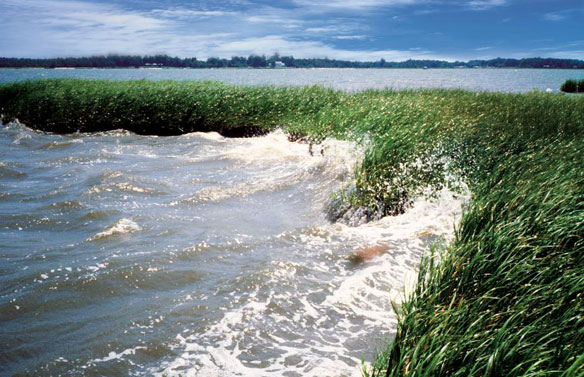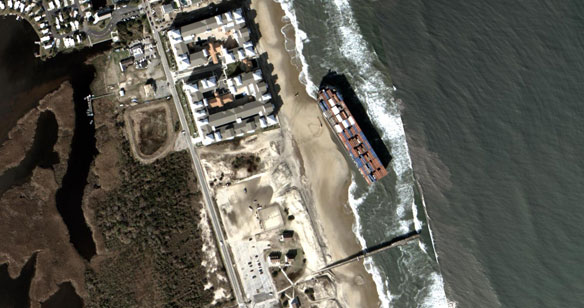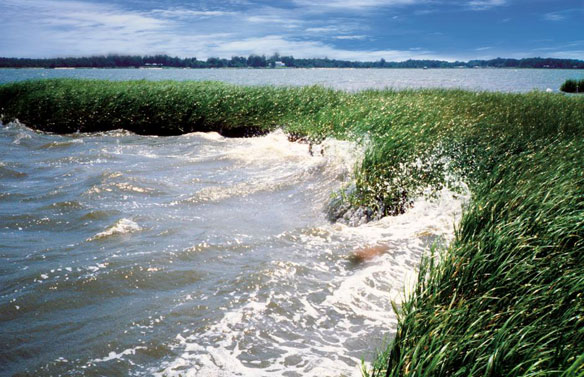
A new NOAA study found coastal areas along the East Coast could be more vulnerable to storm surges and sea level rise in future El Nino years. Caption and photo source: NOAA
By NOAA
Coastal communities along the U.S. East Coast may be at risk to higher sea levels accompanied by more destructive storm surges in future El Niño years, according to a new study by NOAA.
The study was prompted by an unusual number of destructive storm surges along the East Coast during the 2009-2010 El Niño winter.
The study, led by Bill Sweet, Ph.D. from NOAA’s Center for Operational Oceanographic Products and Services, examined water levels and storm surge events during the ’cool season’ of October to April for the past five decades at four sites representative of much of the East Coast: Boston, Atlantic City, N.J., Norfolk, Va., and Charleston, S.C.
From 1961 to 2010, it was found that in strong El Niño years, these coastal areas experienced nearly three times the average number of storm surge events (defined as those of one foot or greater). The research also found that waters in those areas saw a third-of-a-foot elevation in mean sea level above predicted conditions.
“High-water events are already a concern for coastal communities. Studies like this may better prepare local officials who plan for or respond to conditions that may impact their communities,” said Sweet. “For instance, city planners may consider reinforcing the primary dunes to mitigate for erosion at their beaches and protecting vulnerable structures like city docks by October during a strong El Niño year.”

November 2009’s Mid-Atlantic Nor’easter brought damage to the Hampton Roads, Va. area, to include a barge that grounded onto Virginia Beach. Caption and photo source: NOAA
El Niño conditions are characterized by unusually warm ocean temperatures in the Equatorial Pacific that normally peak during the Northern Hemisphere “cool season.” They occur every three to five years with stronger events generally occurring every 10-15 years. El Niño conditions have important consequences for global weather patterns, and within the U.S., often cause wetter-than-average conditions and cooler-than-normal temperatures across much of the South.
The study builds on previous ocean-atmospheric research, which has concluded that during El Nino Nor’easter wind storms are more frequent along the East Coast during the ‘cool season’. El Niño and its impacts usually fade in the warmer months, and which may transition into La Niña conditions, which are generally opposite to those of El Niño. However, a similar connection between La Niña conditions and depressed East Coast sea levels was not found.
“This research furthers our understanding of the interconnections between the ocean and atmosphere, which are so important in the Earth’s climate system, and points to ways this greater understanding can be used to help coastal communities prepare for the winter season,” said Keith L. Seitter, executive director of the American Meteorological Society.
US West Coast Erosion Spiked In 2009-10, Previewing Likely Future As Climate Changes, USGS









